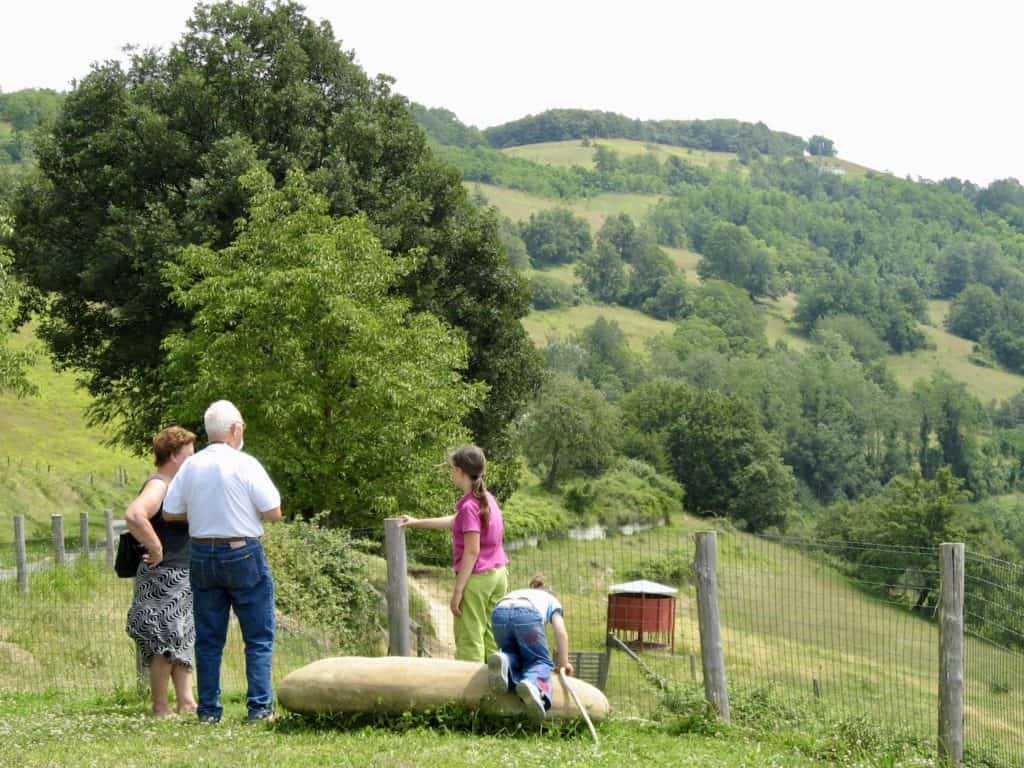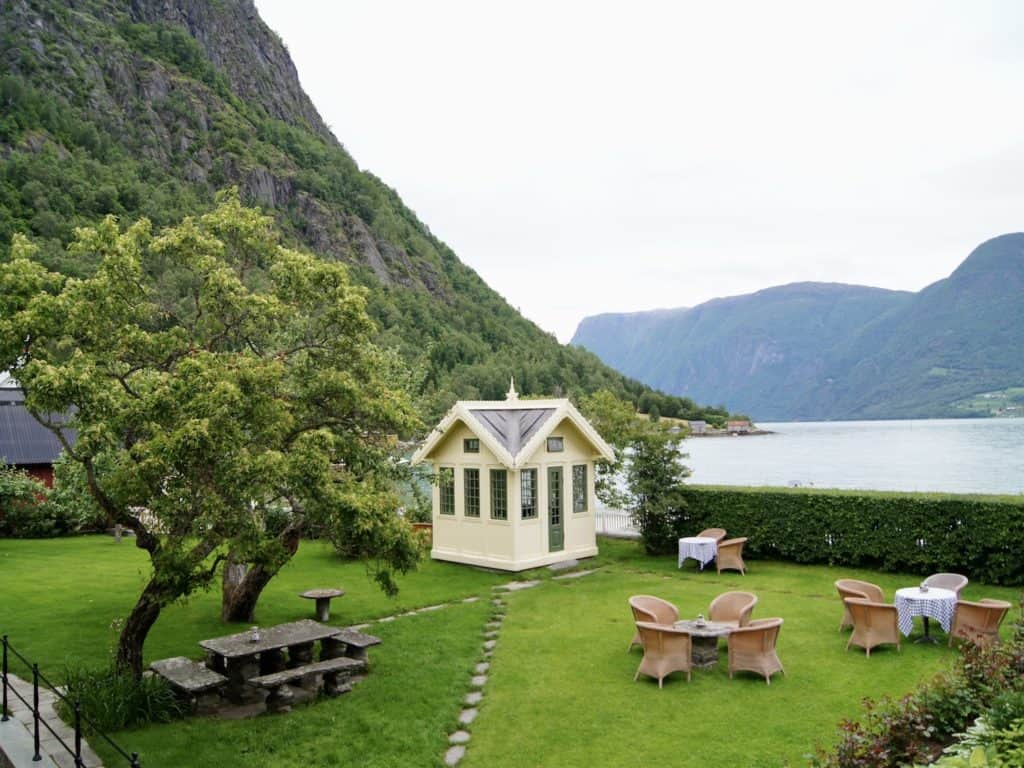The Emerald Isle is a fabulous place to explore! The land is breathtakingly beautiful along the coast as well as inland. Plus the history and culture — plus meeting locals along the way — are highlights of any visit. Our two-week visit to the Republic of Ireland (Éire in Irish) focused on the southern region beginning in Dublin in the east, then continuing on to the southern coastline with stops in Kinsale, Kenmare, and Dingle and concluding with a visit to the spectacular Cliffs of Moher in the west. My husband and I traveled with several good friends. With seven of us in total, we rented two cars which made traveling from place to place easy; driving also enabled us to make unscheduled stops along the way when we sensed something interesting. Every trip requires prioritization, and we opted not to visit very touristy spots like Blarney Castle — but that was just our choice. As with most other places, there are so many options.
14-Day Ireland Itinerary
We chose four towns for overnighting along the way. Of course, depending on your interests, you may opt for more or fewer nights in each place. Here’s the itinerary that worked out well for us.
- Dublin (3 nights), Ireland’s capital; then drive to Kinsale (stopping at the Rock of Cashel and Cahir Castle)
- Kinsale (4 nights), charming coastal town (includes a day trip to Cobh)
- Kenmare (3 nights), close to Ring of Kerry (includes a day trip to Ring of Kerry)
- Dingle (3 nights), a charming coastal town with opportunities for lovely drives
- Your choice (1 night) overnight somewhere between Cliffs of Moher and Dublin, visiting Cliffs of Moher after leaving Dingle and before returning to Dublin
Renting a Car in Ireland
If you are from North America, are visiting Ireland for the first time, and have decided to maximize the experience by creating your own itinerary, you will also likely be renting a car and driving yourself. Our group rented two cars at Dublin Airport for our entire southern Ireland adventure. If you choose to do the same, note that some of those Irish country and coastal roads can become extremely narrow while still supporting two-way traffic. So, I advise considering choosing the maximum possible rental car insurance coverage, just in case.
Also, it would be a good idea not to learn how to drive on the “other side of the road” in the heart of Dublin! We actually had scheduled to drive to Howth after arriving which gave us time to get used to the roads — as drivers and passengers. It will be challenging enough to learn how to turn corners without ending up on the wrong side of the road and how to negotiate roundabouts without city traffic breathing down your neck. Before getting behind the wheel, consider some other driving tips while traveling in Europe.
By the way, while in Dublin, we didn’t make much use of the rental car as the city is quite walkable.

Dublin
Situated on Dublin Bay on the east coast of Ireland, Dublin is Ireland’s largest city as well as its capital. There are plenty of museums to visit; streets to stroll; trails to bike; Guinness beer and Jameson Irish Whiskey to sip; and several links to literature including places dedicated to James Joyce, author of Ulysses.
Highlights of our visit to Dublin include:
- Trinity College Library includes an incredible The Long Room in the Old Library, dating to 1732, and the Book Of Kells which contains the four illustrated Gospels, in meticulous artistic detail, completed around 800 AD.
- Irish pub crawls. We really enjoyed the Musical Pub Crawl which features actors/ musicians who entertain you with stories and Irish songs while you visit various pubs. There’s also a Dublin Literary Pub Crawl that might be worth a visit.
- Saint Patrick’s Cathedral in Dublin, Ireland, founded in 1191, is the National Cathedral of the Church of Ireland.
- Jameson distillery tour. Learn about the history of the distillery and enjoy a complimentary beverage, too.
- Guinness brewery tour. Enjoy a tour of this famous brewery where Arthur Guinness began brewing in 1759 and the amazing view of Dublin offered at the Gravity Bar, on the top floor.

The Long Room in the Trinity College Old Library dates back to 1732.
On our drive from Dublin to Kinsale, we stopped at the Rock of Cashel and Cahir Castle — both interesting spots to explore a bit of history.
Rock of Cashel
One of Ireland’s most historic sights, the Rock of Cashel was the seat of kings from around 300 AD and the place where the King of Munster was converted by St. Patrick. It was fought over by rival Irish clans until it came under the ownership of the Church. Although mostly ruins now, it is an interesting visit.


Cahir Castle
Built in the 12th century, Cahir Castle is on an island in Cahir. This is a castle where you can really imagine life in Medieval times. First, you enter under a threatening sharp-edged metal portcullis (gate). There’s a lot to see including a moat, lookout towers (to catch a great view), and a climb up narrow stairs to see the rooms where the castle folks lived. Also, there’s a miniature display of the castle that provides a good perspective on how the castle inhabitants tried to fight off invaders.
Entrance to Cahir Castle – notice the sharp-edged portcullis as you approach.

Kinsale
This is a storybook pre-steamship port town on the south coast of Ireland. The British won the final victory over Irish clans here in 1601, leading to centuries of British rule.
Kinsale is the quintessential Irish coastal town with great natural beauty, meandering streets with shops and pubs, and excellent restaurants. Strolling was our favorite thing to do here. Highlights of our visit include:
- Don & Barry’s Kinsale Historic Stroll, a walking tour highlighting Kinsale’s important history.
- Charles Fort is a bastion fort with one section of the curtain wall built in star fashion for more effective defense. It is located on the water’s edge, at the southern end of the village of Summer Cove, on Kinsale Harbor. As you walk the grounds, you can piece together the impact this fort had on Irish history. There’s a tearoom where you can relax with a bite to eat.
- Exploring the winding streets in town while browsing the shops or stopping for a great meal. There are also wonderful scenic views outside of town.

Cobh
A day trip from Kinsale, Cobh (pronounced “Cove”) is worth a visit as it was the spot from which the vast majority of Irish embarked on their emigration voyages to America in the 19th century. It was also the Titanic’s last port of call. While there, we visited The Queenstown Story and The Titanic Experience — both worth some time to gain a better perspective on that important part of history and the struggles of so many Irish. With a bit of extra time, we strolled up to the church on the hill and were treated to some beautiful music as the church organist was practicing.

Budd’s of Balledehob – Normally, I don’t highlight restaurants unless we’re really impressed — this is one of those places. We stopped at Budd’s of Balledehob on our drive from Kinsale to Kenmare, and we’re so glad we did. Here’s where you’ll find great food in a small restaurant with a fun, eclectic vibe.
Kenmare
We used this town as a resting spot and one from which we conducted our tour of Ring of Kerry. A beautiful victorian home, Muckross House, is just outside Kenmare on the edge of Killarney National Park. We toured the house that was built in 1843 and visited by Queen Victoria in 1861; the house and grounds give a peek at how well the gentry lived in the Victorian era.

Ring Of Kerry
The Ring Of Kerry is dominated by spectacular natural scenery … green hills and small mountains descending toward the rough ocean becoming a magnificent jagged shoreline. The natural beauty of the Ring is worth investing a day. Although we could have taken a bus tour, we really enjoyed our time with a private guide (that we located online). We found a private guide also enabled us to stop along the way at places that interested us most; plus he knew how to pace the day, so we’d avoid the big bus tours, giving us more time to enjoy places without crowds.
Highlights of our visit include:
- Stopping to explore old abandoned stone mansions, small castles, and stone forts of the past.
- Cahergal Ring Fort sits almost 3 miles off the main road in Cahersivenn. You can walk around, in, and on top of this medieval-era fort that stands on farmland today.
- Valentia Lighthouse, downhill on a very winding road, offers spectacular views and was once staffed by a lightkeeper and his family to guide ships from the sea.
- Telegraph Field, the site where the first transatlantic telegraph cable from North America came ashore in Europe in 1858.
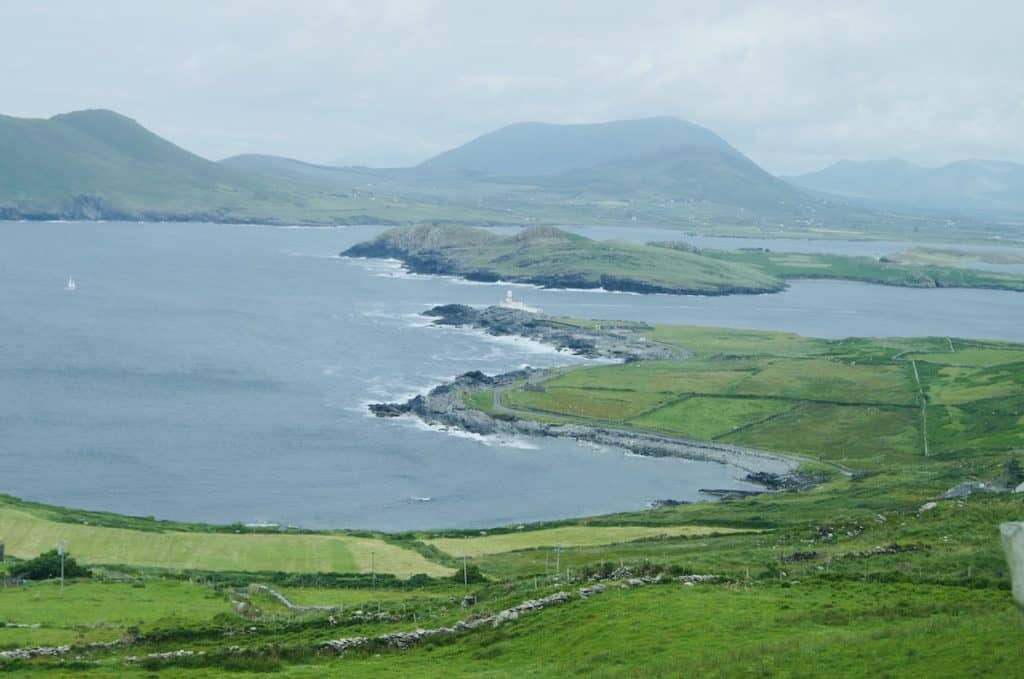
Dingle
Like the Ring of Kerry, Dingle is on a peninsula on one of the southwestern tips of Ireland. It quickly became one of our favorite stops in Ireland. The panoramic view from the docks and shoreline of Dingle is of storybook quality. Believe it or not, this scenic feast only gets better as you drive out of Dingle along the rugged coast toward Great Blasket Island. By the way, as the view goes from fantastic to incredible, the road goes from narrow to “stop, pull in your mirrors and let the oncoming guy figure out how to get by.”
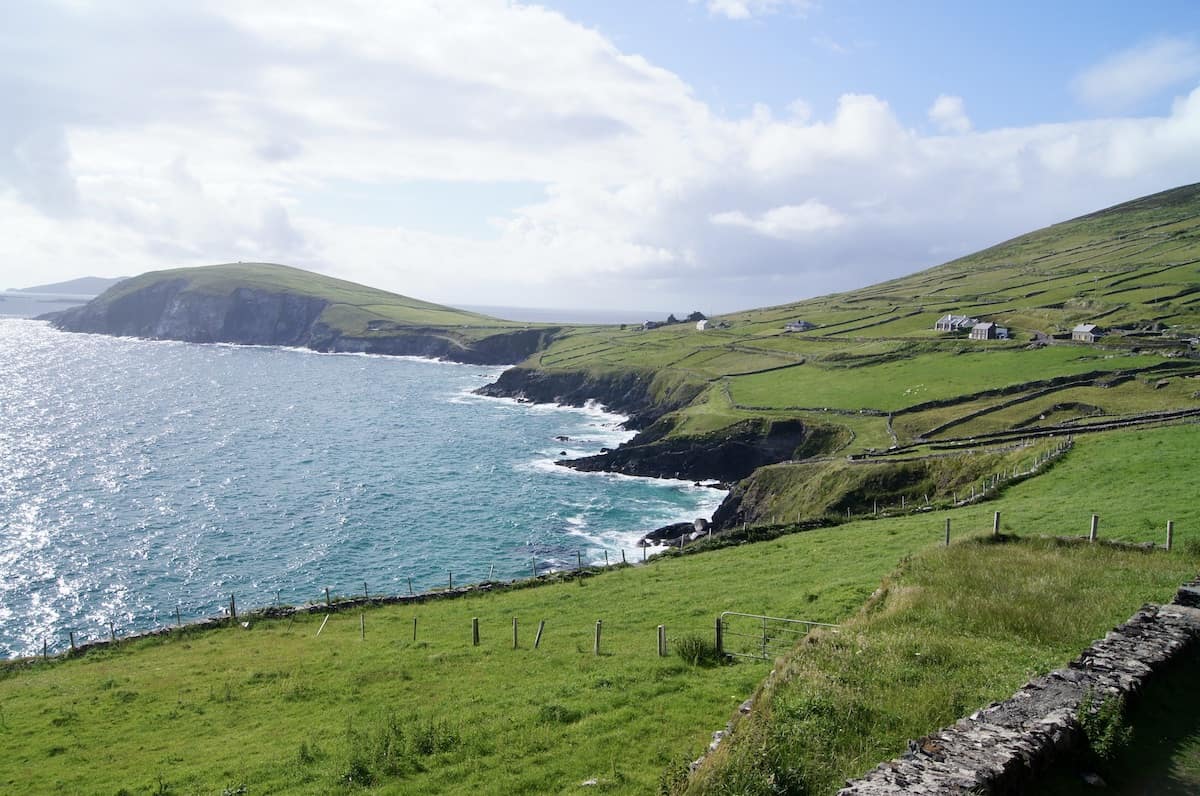
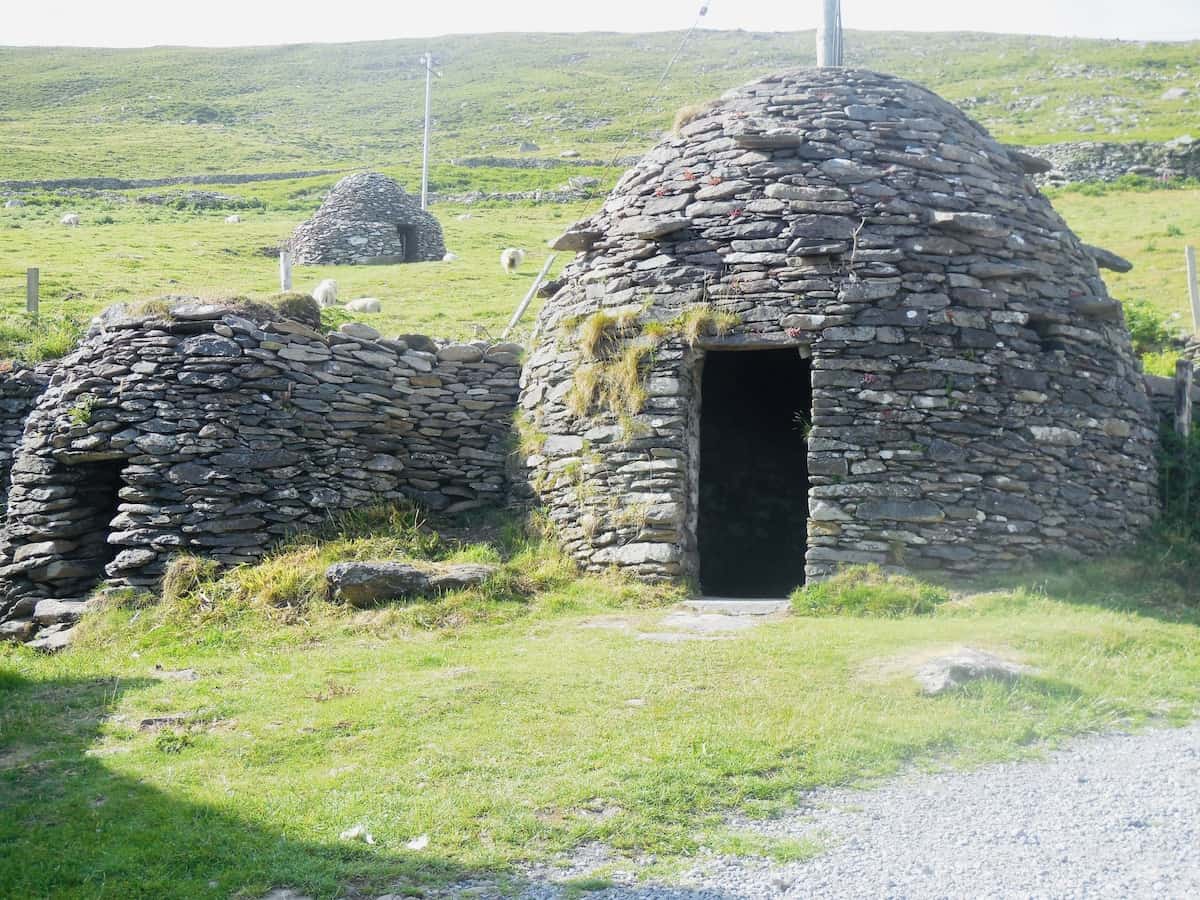
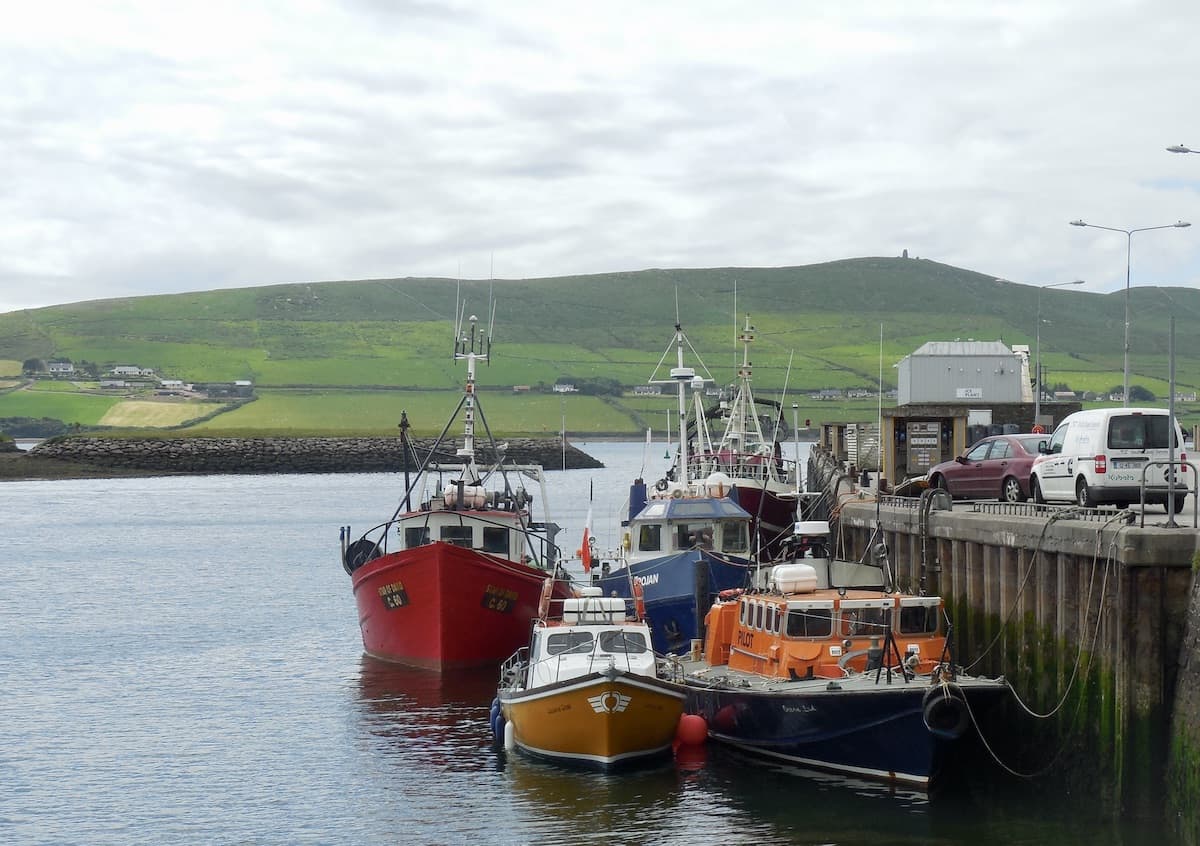
Besides the views in the area, Dingle is worth a couple of nights because you’ll want to enjoy the hospitality, food, and music at their great pubs (one is a hardware store by day and a pub at night), amazing seafood dishes at their restaurants, fun shops, and just strolling around town. There is a slightly cheesy boat tour that went in search of Fungie the Dolphin that we took; it was an amusing way to spend a little time on the water. There are other boating options, though. We can’t say enough about the lovely inn, Castlewood House, the hosts will take good care of you, provide bountiful breakfasts, and provide tips on how to enjoy their scenic location.

Cliffs Of Moher
The Cliffs of Moher are sea cliffs located at the southwestern edge of the Burren region in County Clare, Ireland. The cliffs run for about 9 miles. What’s amazing is that you can go right up to the edge (we shimmied up to the edge on our bellies) and look down the steep precipice. You can not appreciate the dimensions of the cliffs … height, length, and resulting distances until you are standing on top of them. For those uncomfortable being so close to the edge, you can walk behind a protective low wall (for part of the way) and still enjoy the stunning scenery.
Driving Considerations
Note that we found lodging in a town between the Cliffs of Moher and Dublin to be positioned close to Dublin for our flight home the next day. If you choose this option, find a place that is realistic to drive in one day. Figure that the drive from Dingle to the Cliffs of Moher will take 3.5 hours; likewise, the drive from Cliffs of Moher to Dublin should take about 3.5 hours.

If you want to enjoy the cliffs from a different perspective, consider a boat tour to see the cliffs from the water level. We picked up a boat tour just up the coast at Doolin Ferry. Viewed from the water, the majesty of the cliffs is breathtaking. If you have the time and good sea legs, you won’t regret it!
Final Thoughts
Ireland has so much to offer to travelers. In addition to stunning views, rich culture, and castles galore, the people and their food — and beverages — make it an inviting place to visit. At the conclusion of our trip, our entire group agreed that we did indeed visit the very best of southern Ireland.
And to make sure you remember all the great experiences on your next trip, take lots of pictures and create a photo book of your journey when you return home. You’ll be glad you did!
Comments?
Feel free to share your experiences and/or suggestions about traveling in Ireland. What were the top sights for you? Your thoughts could help other travelers. Thanks! 🙂

